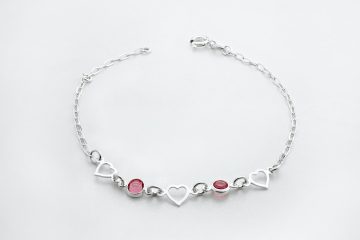Introduction
Wristbands have become an essential item in various domains, from event management and healthcare to security and identification. They are not just fashionable accessories but serve important practical purposes. In this article, we will explore the significance of wristbands and delve into their diverse applications. Join us as we discover the importance of wristbands and how they have become indispensable in today’s world.
1. Enhancing Event Management
Wristbands play a crucial role in event management by enhancing security, improving organization, and simplifying access control. These colorful bands are commonly used at concerts, festivals, conferences, and sporting events. By providing a visible means of identification, they help differentiate attendees, staff, and VIPs. Wristbands can be customized with various colors, patterns, or logos, making it easier for organizers to identify different groups of people.
Moreover, wristbands act as access passes, replacing traditional tickets or badges. They are typically waterproof and durable, ensuring they remain intact throughout the event. This eliminates the need for constant ticket checks, streamlining the entry process and reducing waiting times for attendees. With wristbands, event management becomes more efficient and enjoyable for everyone involved.
2. Promoting Brand Awareness
Wristbands offer an effective marketing tool for businesses and organizations to promote brand awareness. By creating customized wristbands with their logo, slogan, or message, companies can generate visibility and recognition. These wristbands can be distributed at trade shows, conferences, or even as part of promotional packages. When worn by individuals, they become walking advertisements, spreading the brand’s message to a wider audience.
Additionally, wristbands can be used as giveaways or merchandise, further strengthening the connection between the brand and its supporters. People tend to associate positive experiences with the wristbands they receive, reinforcing brand loyalty and increasing the chances of referral marketing. The versatility and affordability of wristbands make them an ideal choice for businesses looking to boost their brand presence.
3. Facilitating Identification in Healthcare Settings
Wristbands play a vital role in healthcare settings, ensuring accurate patient identification and enhancing safety. Hospitals, clinics, and nursing homes often use wristbands as a standard practice to reduce medical errors and prevent mix-ups. These wristbands typically contain crucial information such as the patient’s name, date of birth, and medical record number.
By wearing wristbands, healthcare providers can quickly and easily identify patients, reducing the risk of administering medication or treatments to the wrong person. In emergency situations, wristbands provide immediate access to vital medical information, enabling healthcare professionals to make informed decisions promptly. The use of wristbands in healthcare settings has proven to be instrumental in improving patient safety and minimizing errors.
4. Ensuring Security at Events and Venues
Wristbands are a reliable tool for ensuring security and access control at various events and venues. By using wristbands with unique identifiers, organizers can easily differentiate between authorized and unauthorized individuals. This helps prevent gatecrashing, ticket fraud, or unauthorized entry.
Wristbands can also be equipped with additional security features such as RFID (Radio Frequency Identification) or barcodes. These technologies enable efficient scanning and tracking, providing real-time data on attendees and their movements. With such capabilities, event organizers can monitor crowd flow, identify potential security risks, and ensure the overall safety of the participants.
5. Simplifying Cashless Transactions
In recent years, wristbands have emerged as a convenient solution for cashless transactions at events, amusement parks, and resorts. By incorporating RFID or NFC (Near Field Communication) technology into wristbands, users can make payments simply by tapping their wristbands on compatible devices. This eliminates the need for carrying cash or credit cards, providing a seamless and secure payment experience.
Wristbands with cashless payment capabilities not only enhance convenience for users but also benefit event organizers and vendors. They streamline payment processes, reduce waiting times, and improve overall customer satisfaction. Additionally, wristbands can be easily loaded or recharged with funds, allowing users to manage their expenses effortlessly.
6. Supporting Cause Awareness and Fundraising
Wristbands have become synonymous with raising awareness for various causes and supporting fundraising efforts. These cause-specific wristbands are often made in distinctive colors or engraved with specific messages. They serve as powerful symbols and conversation starters, encouraging dialogue about important social issues.
When individuals wear these wristbands, they demonstrate their support for a cause and help spread awareness to those around them. Many organizations sell these wristbands as part of their fundraising campaigns, with the proceeds going towards their cause. The wristbands become a tangible representation of solidarity and unity, inspiring others to get involved and contribute to the cause.
7. Providing Safety Measures for Children
Wristbands are particularly useful when it comes to ensuring the safety of children in crowded places. Parents or guardians can equip children with wristbands containing their contact information. In case a child becomes separated from their caregiver, the wristband serves as a valuable tool for reuniting them quickly and efficiently.
These safety wristbands often feature a space where a phone number can be written or include QR codes that link to the caregiver’s contact details. By using wristbands in this manner, parents can have peace of mind knowing that their child’s identification is readily available, increasing the chances of a safe and swift reunion in case of an emergency.
Conclusion
From enhancing event management and promoting brand awareness to facilitating identification in healthcare settings and ensuring security at events, wristbands serve a multitude of practical purposes. They have become essential tools in various domains, offering convenience, safety, and efficiency. Whether it’s through their role in access control, marketing, or safety measures, wristbands have proven their worth and continue to evolve in their applications.
FAQs
1. Can wristbands be reused?
Yes, many wristbands are designed to be reusable. They are made from durable materials such as silicone or fabric, allowing them to withstand multiple uses. Reusable wristbands often feature secure closures like snap buttons or adjustable straps, ensuring they stay in place throughout their lifespan.
2. Are wristbands customizable?
Absolutely! Wristbands can be fully customized to suit individual preferences or business branding. From choosing colors and patterns to adding logos or text, there are numerous options available for creating personalized wristbands.
3. Can wristbands be used for age verification?
Yes, wristbands can be used for age verification at venues that have age restrictions or serve alcohol. Different colored wristbands can be assigned to indicate different age groups, making it easier for staff to identify individuals who meet the required age criteria.
4. Are there any eco-friendly wristband options available?
Yes, there are eco-friendly wristband options available for those concerned about sustainability. These wristbands are typically made from recycled or biodegradable materials, offering a more environmentally friendly alternative.
5. Can wristbands be used for medical conditions other than identification?
Yes, wristbands can be used to convey important medical information beyond patient identification. For example, individuals with allergies or specific medical conditions can wear wristbands that indicate their condition, allowing others to provide appropriate assistance in case of an emergency.




